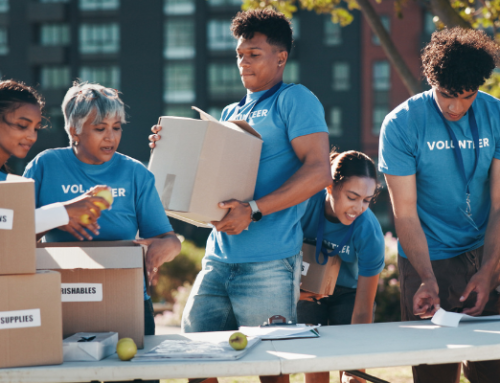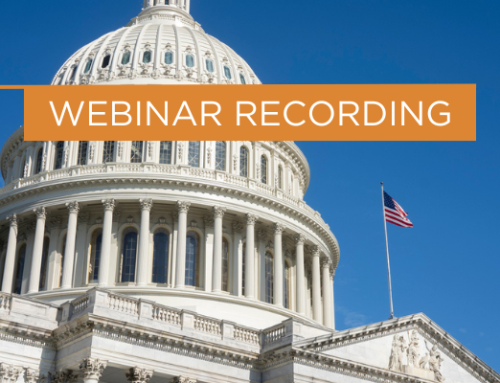Key points covered in this article:
-
Nonprofits are navigating high costs, shifting donor behavior, and government funding delays, prompting many to adjust budgets, diversify revenue, and adopt digital tools to maintain service quality.
-
Recent tax law changes, including new donation deductions and corporate giving rules, may influence giving patterns in the second half of 2025.
-
Sector-specific trends show continued demand for social services, modest growth in education and cultural institutions, and evolving engagement strategies across membership and religious organizations.
In mid-2025, many nonprofit organizations are focused on building resilience. Costs remain high, and new tax legislation may begin to influence donor behavior. Some organizations are reducing budgets or postponing spending, while others are making changes to how they deliver services in order to maintain quality without straining their teams.
There is reason for optimism. Total giving across the U.S. reached record levels in 2024, and the new tax law may lead to modest gains in individual giving. Additionally, corporate and foundation support remains steady in most sectors. Nonprofit leaders are watching closely and adjusting plans to help preserve services and protect long-term sustainability.
Economic and Legislative Developments
Financial positions vary widely across the sector. Some organizations have healthy reserves and a stable mix of funding. Others are under pressure, especially those that rely on government reimbursements or recurring small-dollar gifts. While inflation has eased, the cost of operations has not. Wages, insurance, and essential supplies continue to be significant expenses. Nonprofits providing direct services are also seeing higher demand and rising per-unit costs. In response, many finance teams are updating forecasts more frequently and reviewing reserves heading into year-end.
Government funding has been more difficult to plan around. A temporary pause in early 2025 disrupted more than 2,600 programs. Even after disbursements resumed, delays continued. Larger organizations that depend on government contracts were especially affected. This experience has led many to evaluate cash flow, reimbursement timing, and contingency planning more carefully.
Private funding has followed mixed patterns. Foundation payouts have held steady, but some new grants are slower to materialize. Corporate giving is also facing pressure. Some companies are considering pulling back on donations due to layoffs or trade-related uncertainty. And giving from middle-income households has softened as families watch their budgets. Organizations that rely on tuition, events, or earned income have seen greater unpredictability and are seeking ways to remain flexible. Cryptocurrency donations are becoming more common, with more nonprofits accepting this type of donation.
Recent legislation may influence giving in the second half of the year. The One Big Beautiful Bill, signed on July 4, introduces a number of tax changes that affect philanthropy. For individuals, the bill introduces a 0.5% AGI floor for deductible gifts and caps the top-bracket deduction at $0.35 per dollar. It also adds a non-itemizer deduction of up to $1,000 ($2,000 for joint filers) for gifts to public charities, which may increase small-level donations. On the corporate side, businesses must now give at least 1% of taxable income to claim deductions. The bill also imposes an excise tax of up to 8% on endowment income at large private universities, which may indirectly affect community grantmaking. Lower individual tax rates were made permanent, which could modestly support giving at the household level. Nonprofit leaders may want to revisit donor messaging and plan ahead for the impact of these changes.
Sector-Specific Updates
Museums, Parks, and Zoos
Visitor traffic has returned to about half of pre-pandemic levels, and the sector is expected to grow modestly over the next several years. Revenue is projected to grow to $97 billion by 2029, which is an compound annual growth rate of about 5%. Staffing challenges remain, and a majority of institutions report flat or declining donations.
To counter these issues, many cultural organizations are expanding digital offerings, developing new membership models, and pursuing environmentally focused capital projects. Corporate partnerships are also helping broaden visibility and support new revenue streams.
Private Schools & Higher Education
Private K–12 schools are seeing modest enrollment growth. Expanded school-choice programs have contributed to this trend. However, rising payroll costs and capital improvement needs may lead to tuition increases. Middle-income families are feeling the squeeze, and some schools are looking for ways to ease the pressure.
Higher education trends are more mixed. Enrollment is up in 2025, but that’s still under pre-pandemic numbers. That points to hesitation among students and families, possibly due to cost or changes in demographics. Colleges and universities are also adjusting to a decline in small-dollar alumni giving by focusing on foundations and planned gifts. Public confidence has declined over the past decade, prompting more institutions to focus on transparent reporting, student-focused technology, and cybersecurity investments.
Membership Organizations
Professional associations and civic clubs have grown at a steady pace in recent years. The number of active organizations is steadily increasing, with overall revenue projected to reach more than $26 billion by 2025. Peer networking and professional development remain strong draws for members.
At the same time, renewal patterns are shifting. Younger professionals are more selective and tend to look for immediate value. In response, many associations are testing tiered pricing models, expanding micro-credential programs, and building digital communities to stay connected between events.
Religious Organizations
Religious groups continue to receive a large share of total giving, but attendance has declined. Roughly 30% of U.S. adults now attend weekly services, down from over 40% two decades ago. Congregations that offer both in-person and online options have seen better retention than those with traditional models only.
To maintain support, many churches and faith-based organizations are investing in digital tools and outreach programs that reflect the needs of younger members. Local service efforts remain a strong source of community connection and can help sustain financial contributions.
Social Assistance Organizations
Demand continues to grow for food assistance, emergency housing, and elder care. More than 47 million Americans face food insecurity, and many counties are reporting an increase in housing-related needs. Capacity is stretched in many areas due to limited resources and rising service costs.
For groups that rely on public funding, cash flow has become a challenge. Many nonprofits with government contracts have experienced recent payment delays. To adapt, many are strengthening donor outreach, building business partnerships, or exploring earned revenue opportunities to reduce reliance on public funds.
Strategic Takeaways
A few key actions are helping nonprofits maintain stability this year.
- Building a balanced revenue mix that does not rely too heavily on one source.
- Investing in digital tools that support giving, communication, and program delivery.
- Focusing on cost control through shared services, technology, and smart procurement.
- Maintaining operating reserves and revisiting cash flow models regularly.
- Sharing measurable results that show how funding supports the mission.
Conclusion
Nonprofit leaders face a mix of challenges and opportunities in the second half of the year. Financial conditions are changing, and policy updates may affect how donors give. By staying focused on strong planning and clear communication, organizations can navigate uncertainty and continue to serve their communities. For insights into nonprofit financial metrics and emerging trends, contact PBMares Not-for-Profit Partner Bo Garner.





